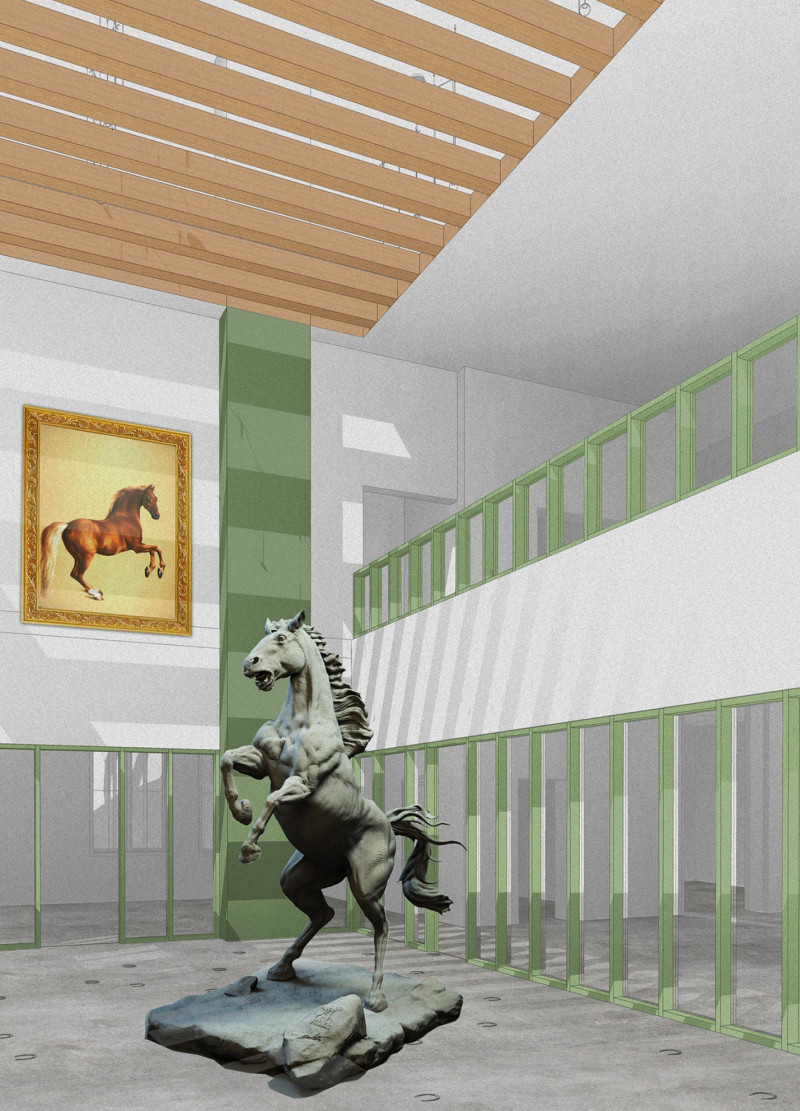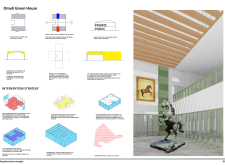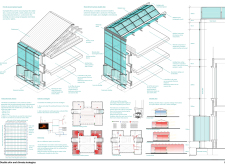5 key facts about this project
The Omuli Green House project combines thoughtful design with practical functionality, set in an environment that encourages interaction with nature. It serves various roles, including spaces for public activities and private retreats. The design emphasizes a connection between the inside and outside, creating an inviting atmosphere while focusing on user comfort and energy efficiency.
Architectural Framework
The layout features two lateral volumes surrounding a central core, which makes the best use of space. This design promotes easy movement throughout the building, with the north-south axis aiding circulation. At the same time, the east-west orientation allows for effective communication between service areas. Public spaces, like workshops, are located on the ground floor for easy access, while private areas are positioned above. A double skin system supports thermal efficiency, contributing to the building's energy management.
Intervention and Adaptability
The plan includes semi-outdoor areas that improve the overall user experience, allowing the spaces to be functional throughout the year. By utilizing the greenhouse effect, these areas can be used in various weather conditions. A double-height space on the ground floor incorporates a polycarbonate façade that assists with cooling in the workshop. This design choice plays a key role in maintaining thermal comfort for users, ensuring a pleasant indoor environment.
Spatial Configuration
The ground floor is designed to maximize natural light and minimize changes to existing structures. Some walls are retained while wood framing is exposed, showcasing the building's integrity. The design removes one staircase to create a nucleus that accommodates essential services, such as kitchens and bathrooms, making the best use of available space.
On the upper floor, rooms are arranged around communal areas, with existing chimneys providing warmth through fireplaces. This layout encourages interaction among guests while maintaining privacy when needed.
Thermal and Heating Strategies
Heating systems are customized for each floor. The first floor uses a water heating system connected to an accumulator, while the second floor employs passive heating through fireplaces, allowing occupants to control their comfort. The phased construction of the façade culminates in a metal framework that increases height and adds skylights, which bring in natural light and enhance the overall design.
The project also integrates outdoor exhibits and activities related to the museum, which foster public engagement. A network of pathways connects various experiences, improving accessibility. This design concludes with a covered terrace, extending the living space outside and encouraging a close relationship with the surrounding environment.






















































